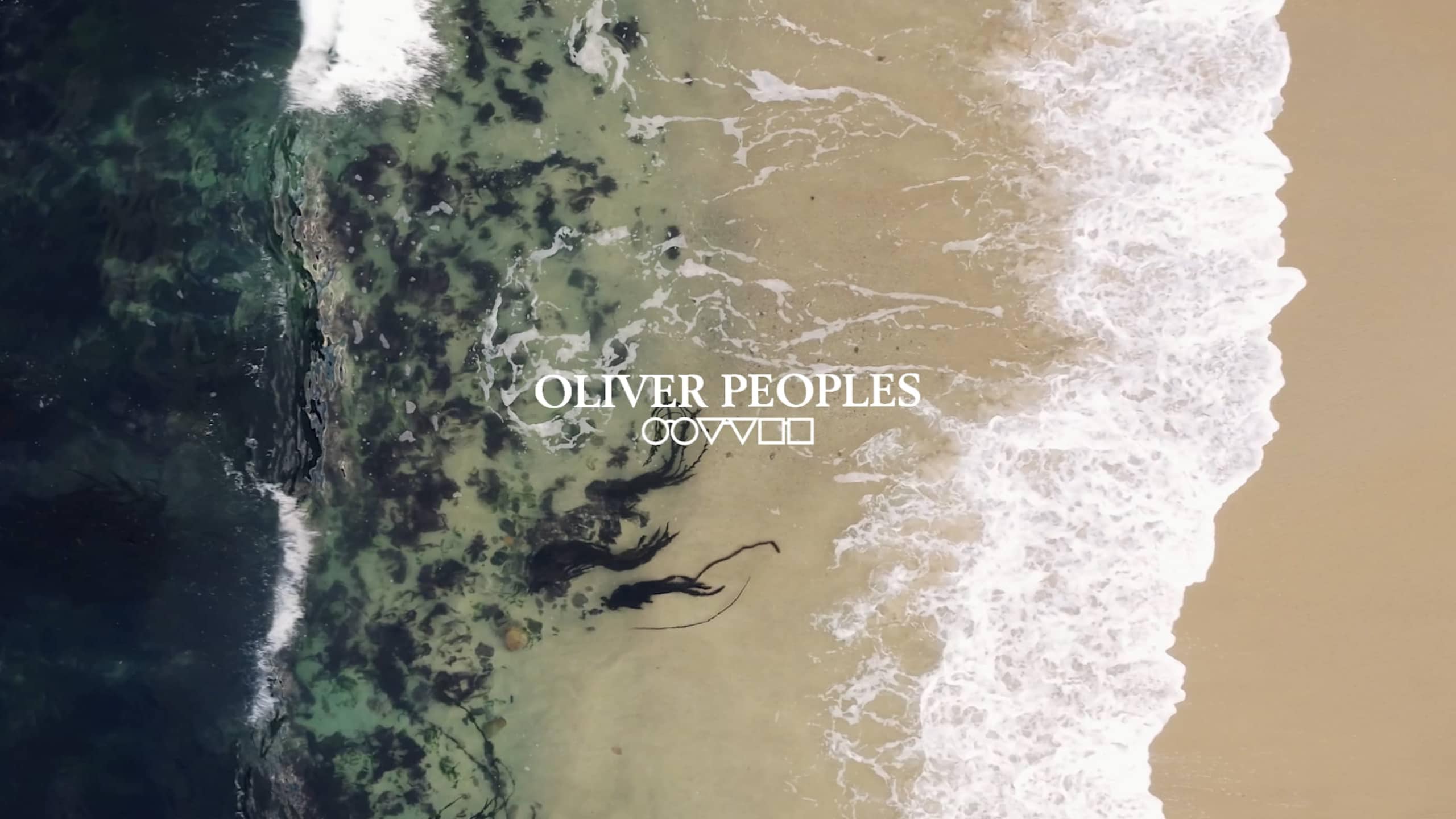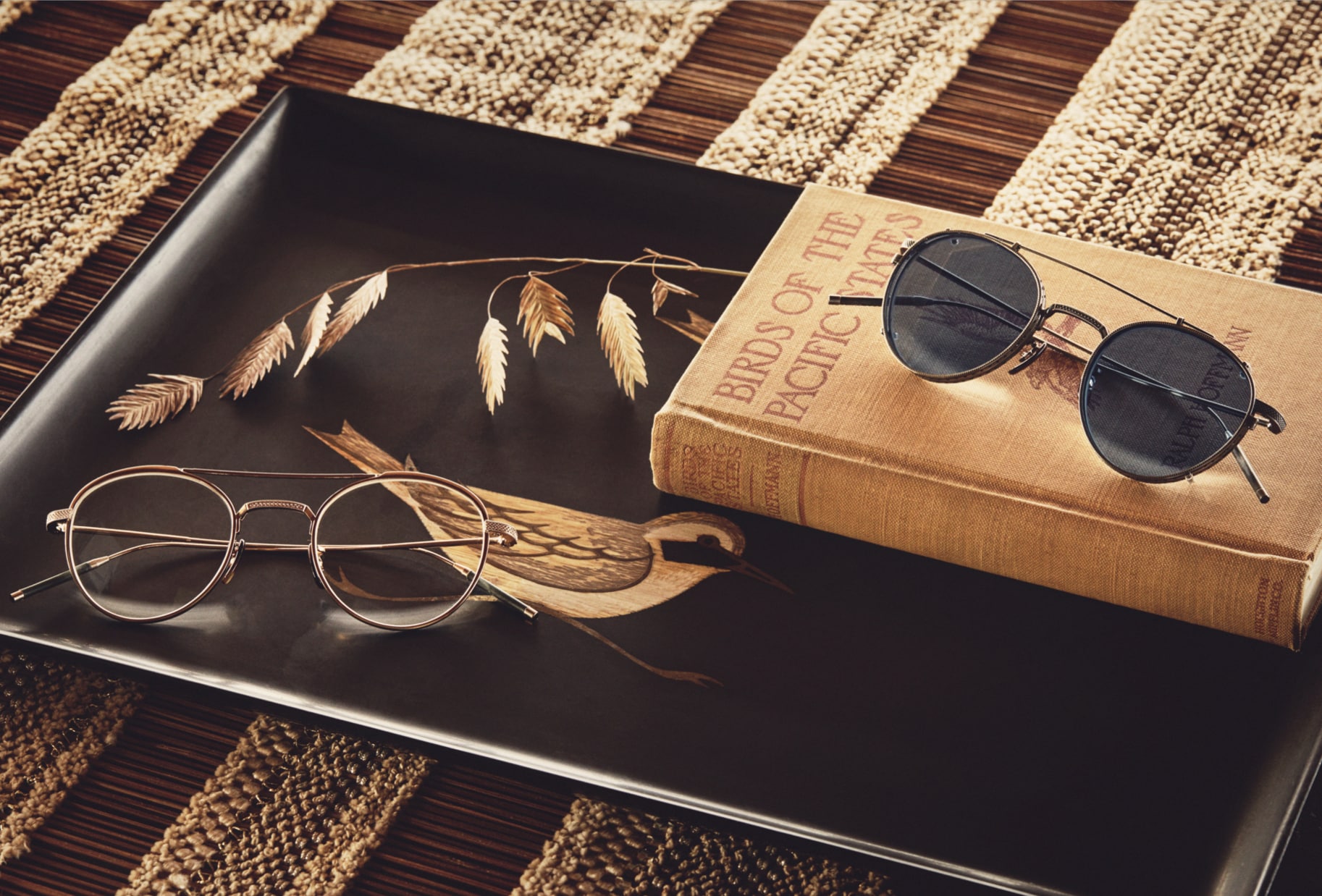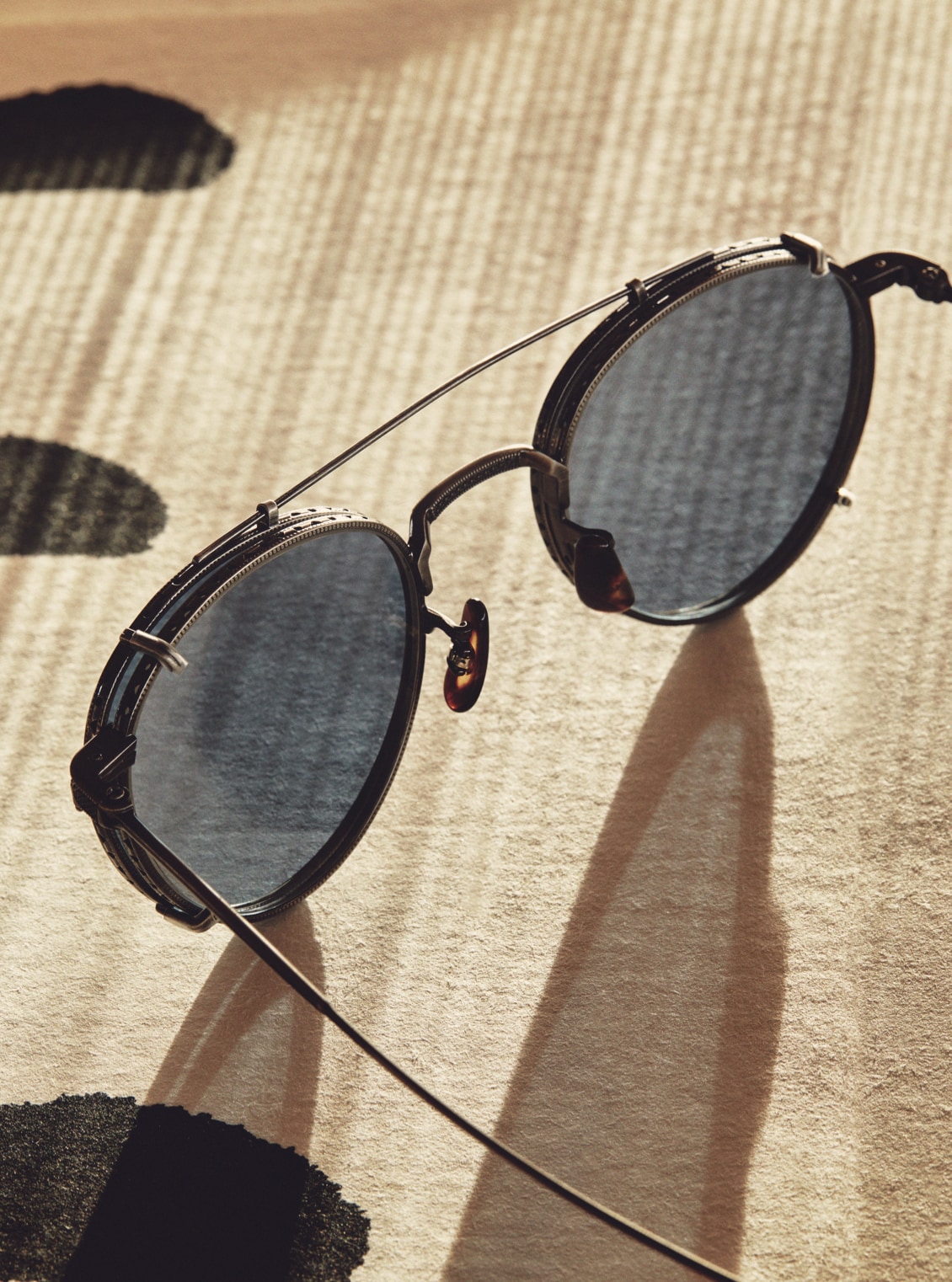Campaigns | Craftsmanship
Oliver Peoples Series I: an Homage to the Brand’s Heritage and Japanese Craft
6 Min Reading

Play
Loading
Pause
Oliver Peoples’ decades-long connection to Japanese artisanry reaches its zenith in its latest capsule collection.
The philosophy of exceptional artisanry is far from simply achieving technical supremacy in the material world; it’s a spiritual and social obligation to deliver one’s very best, no matter what the endeavor. To deserve this revered designation, a true artisan knows no step can be skipped, no detail left unconsidered. The work must be perfect in its totality.
TK-1 frame and clip in Pewter + Blue and TK-3 in Brushed Silver + Ash Blue Wash Photochromic rest atop natural bamboo textures and prints from Japan.
It is this rare obsession with craftsmanship that compelled the founders of Oliver Peoples to collaborate with Japanese producers from the very beginning. The relationship between company and country was forged in 1987, supported, in those days, by fax machines and frequent flights to Japan. This formative era would come to influence the Oliver Peoples brand and product philosophy in ways that reverberate to this very day. Japan—its fashion, its architecture, its culture, its art remains inherent to the Oliver Peoples brand, and its Japanese partners continue to be instrumental in helping OP create enduring eyewear, meticulously made and beautifully designed. This inseparable, decades-long connection to Japanese artisanry reaches its zenith in Oliver Peoples’ latest capsule. Designed in Los Angeles and manufactured in Japan, the collection is both a sophisticated study in the Japanese art of eyewear and a fresh, relevant homage to the heritage of Oliver Peoples.
A nod to Japan’s long-standing heritage of indigo can be found in the Blue lenses of the TK-1 Clip.
A modern feel meets vintage design in TK-2 in Brushed Gold.
TK-2 in Antique Gold and TK-1 in Pewter with dedicated clip at home amongst the Walker House’s original mid-century decor.
Series I which consists of two optical styles, one sunglass, and one clip-on sunglass offers modern
takes on time-honored looks, with nods to Japanese craft and aesthetics throughout.
When creating
this master artisan collection, Oliver Peoples saw every surface as an opportunity to demonstrate
thoughtfulness in design and exceptionalism in craft. A custom filigree, artfully pressed into titanium,
appears on all styles. Its
design is a celebration of Japanese minimalism and architecture and features a multi-dimensional pattern
of raised diamonds and dots.
As the eye absorbs, the mind wanders to the works of architects like
Kengo Kuma and Tadao Ando, contemporary masters who used their materials to spartan yet elaborate
effect. One might also find parallels in the striking specificity of artists Nobuo Sekine and Lee Ufan,
pioneers of the Mono-ha art movement of the mid-century.
This sense of simple intricacy pervades.
Subtle details are found in the perforated design along the eyewire of TK-1 and continued along the
eyewire of its sunglass clip.
Custom filigree, inspired by the architecture of Japan, can be found on the endpiece and topbar of TK-2 in Antique Gold.
The smart geometric pattern of circles and triangles was found within the Oliver Peoples archive, on a
pair of glasses made thirty years ago in Japan. Elsewhere, a cylindrical weighted temple tip, available
in tortoiseshell and solid colors, adds an improvement of form and the invaluable unseen function of
resting more nicely on the face. Its inclusion is seamless and elegant, flush with the surrounding
titanium. Such small details, taken in aggregate, deliver immense enjoyment to the wearer.
The
collection is truly a marriage of Japanese craftsmanship and design principles core to the Oliver
Peoples brand. Take, for instance, tortoiseshell. When Oliver Peoples first opened, it was known to
launch one frame in eight different tortoise colors. The pattern—and OP’s clever applications of
it—became something of a calling card, making unforgettable pop culture cameos over the years. Within
each small space, a world of color: the blush of a Kyoto sunset, the smoke-gray of Tokyo concrete.
OP’s history of tortoise shell appears on acetate nose pads throughout the collection, as seen here on TK-2 in Antique Gold.
The richly-hued lenses of the TK-1 Clip add a striking versatility to the TK-1 optical frame.
Within each small space, a world of color: the blush of a Kyoto sunset, the smoke-gray of Tokyo concrete.
Each bit of tortoise works in harmony with the frame while telling its own story.
For the frame
colors themselves, Oliver Peoples turned to the past. The titanium frames are rendered in flattering
warm and cool tones: Pewter, Brushed Silver, Brushed Gold, and Antique Gold. Aged finishes
like Pewter and Antique Gold were far less common when Oliver Peoples began employing them in the
late 1980s, a time when subtlety was oft shunned and neon plastic de rigueur.
Today, Pewter and
Antique Gold are longstanding icons within the Oliver Peoples catalog and remain mainstays.
Their use within the collection is a tip of the hat to the special elements that helped solidify OP’s
reputation as an innovative and elegant force over the last thirty years.
Complementing the frames
are custom
lenses rendered in vintage inspired colors of varying saturation. Every element from the acetate nose
pad to the metal eyewire—was taken into account when selecting a corresponding lens color and density.
Series 1 is both a sophisticated study of the Japanese art of eyewear and an homage to OP’s own heritage.
Classic Grey and Brown offer a sense of everlasting cool, while a rich Blue lens pays homage to Japan’s
heritage of indigo and Persimmon provides a fresh medium-density alternative. A Japanese love for washed
lenses informed the colors for the TK-2 eyeglasses, which come in three light-colored transparencies.
Finishing off each lens: a custom crafted breath logo—yet another detail for the wearer.
This Series
I collection, from the frames to the bespoke packaging, is the physical manifestation of some of the
higher ideals found within Japanese craft and Oliver Peoples’ design legacy.
Here, the artisanal is
favored over the mass-produced, and each choice no matter how
seemingly small is made with intention.
This extraordinary attention to detail and thoughtful use of
materials is fully apparent with the rice paper box that houses each frame. Much like the frames
themselves, the packaging was seen as an additional opportunity for exquisite craftsmanship. With this,
every line, every curve, every angle of the collection honors and exhibits the work of the master
artisan.
Words: Jenny Bahn
Video: Yong Kim
Photos: Rich Stapleton
The Walker House & California’s Intrinsic Connection to Japanese Design






















